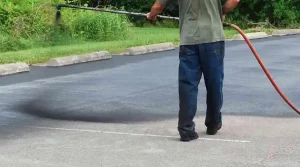Why Paver Stability Matters
Imagine investing in a beautiful paver patio or driveway, only to watch it slowly deteriorate and become uneven. Paver shifting and settling can turn your dream outdoor space into a maintenance nightmare. But don’t worry – with the right knowledge, you can keep your pavers looking pristine for years to come.
The Foundation of Paver Stability: Understanding the Basics
Pavers are more than just decorative stones. They’re a complex system that requires careful installation, maintenance, and ongoing care. Let’s break down everything you need to know to prevent shifting and settling.
Key Strategies for Paver Stability
1. Proper Base Preparation: The Critical First Step
Excavation Depths:
- Pedestrian Areas: 6-8 inches
- Driveways: 8-12 inches
Essential Tools:
- Plate compactor
- Excavation equipment
- Quality gravel or crushed stone
2. Material Selection: Quality is Key
What to Look For:
- High-grade pavers
- Crushed stone base materials
- Geotextile fabric
- Polymeric joint sand
Preventing Paver Movement: Expert Techniques
Stabilization Methods
- Edge restraints
- Geotextile fabric installation
- Proper compaction techniques
- Strategic sand application
Top 10 Causes of Paver Shifting and Settling (With Solutions)
- Insufficient Base Depth
- Solution: Deeper excavation
- Add additional gravel base
- Ensure complete soil removal
- Improper Compaction
- Use plate compactor
- Compact in layers
- Check for even surface
- Poor Drainage
- Install French drains
- Create proper water runoff
- Use swales to direct water
- Edge Restraint Failure
- Reinforce perimeter
- Use heavy-duty restraints
- Regular inspection
- Organic Material in Base
- Complete removal during excavation
- Use geotextile barrier
- Prevent future organic intrusion
- Inadequate Joint Sand
- Use polymeric sand
- Compact thoroughly
- Reapply as needed
- Heavy Traffic Challenges
- Thicker pavers for high-traffic areas
- Stronger base materials
- Additional reinforcement
- Erosion Control
- Redirect water flow
- Install erosion barriers
- Regular maintenance
- Tree Root Interference
- Root trimming
- Install root barriers
- Consider root impact during planning
- Frost Heave Prevention
- Improve drainage
- Use frost-resistant materials
- Add deeper base layer
Maintenance Pro Tips
Regular Care Checklist
- Annual professional inspection
- Reapply joint sand every 2-3 years
- Check for drainage issues
- Remove vegetation near edges
- Seal pavers periodically
Cost Considerations
Minor Repairs: $500 – $2,000 Major Repairs/Replacement: $2,000 – $10,000+ Full Replacement: $10,000 – $30,000
Preventative Maintenance Savings: Up to 70%
When to Call a Professional
While DIY maintenance is possible, professional services offer:
- Comprehensive assessments
- Advanced repair techniques
- Long-term stability guarantees
- Expert installation
Conclusion: Your Pavers, Your Investment
Preventing paver shifting isn’t just about aesthetics – it’s about protecting your property’s value and creating lasting outdoor spaces. By understanding potential issues and implementing proactive strategies, you can enjoy beautiful, stable pavers for years to come.
Ready to protect your outdoor surfaces? Contact a professional paving service for a comprehensive evaluation.
Additional Resources
- Driveway Drainage Guide
- Pothole Prevention Strategies
- Property Development Paving Tips







